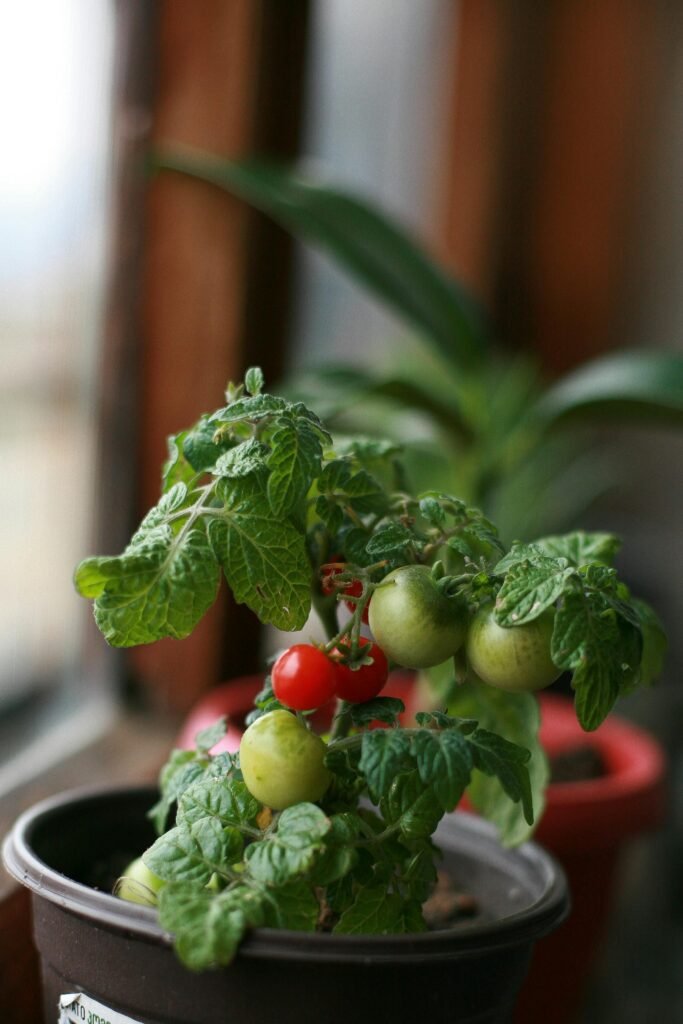Indoor gardens may need to grow lights for vegetables primarily because they often lack access to sufficient natural sunlight. Sunlight provides the full spectrum of light wavelengths necessary for photosynthesis, the process by which plants convert light energy into chemical energy to fuel their growth. When growing vegetables indoors, especially in spaces with limited natural light, grow lights serve as a substitute for sunlight, providing plants with the light energy they need to thrive.
As for the steps involved in the growth of vegetables in indoor gardens, it’s important to note that the growth process of vegetables can vary depending on factors such as the type of vegetable, environmental conditions, and cultivation methods. However, a generalized outline of the growth stages of vegetables in indoor gardens might include:
1. Preparation: Prepare the growing medium, containers, and any necessary support structures for the vegetables you plan to grow indoors.
2. Seed planting: Plant vegetable seeds in the growing medium according to the recommended depth and spacing for each type of vegetable.
3. Germination: Keep the growing medium consistently moist and provide appropriate warmth to encourage seed germination. This stage involves the emergence of seedlings from the soil.
4. Seedling growth: As the seedlings grow, provide adequate light, water, and nutrients to support healthy growth. Monitor for signs of pests, diseases, or nutrient deficiencies and take appropriate action as needed.
5. Vegetative growth: Once seedlings have established themselves, they enter a phase of vegetative growth characterized by the development of leaves, stems, and roots. Continue to provide optimal growing conditions and support the plants as they grow.
6. Flowering and fruiting: Depending on the type of vegetable, plants may begin to produce flowers, followed by the development of fruit. During this stage, it’s crucial to provide sufficient light, water, nutrients, and pollination (if necessary) to support fruit development.
7. Harvesting: As vegetables reach maturity, harvest them at the peak of ripeness for the best flavor and nutritional content. Harvesting may involve cutting, picking, or pulling vegetables from the plants.
8. Regeneration or replanting: In some cases, certain vegetables may continue to produce new growth after harvesting, while others may need to be replanted for subsequent harvests.
These steps provide a general overview of the growth process of vegetables in indoor gardens, but the specific requirements and timelines can vary widely depending on the type of vegetable and the growing conditions. It’s essential to research the specific needs of the vegetables you plan to grow and adapt your cultivation practices accordingly.
Grow lights help vegetables in indoor gardens by providing artificial light that mimics the spectrum of natural sunlight. Here’s why grow lights are beneficial for vegetable growth:
1. Supplemental light: In indoor environments, natural sunlight may be limited or insufficient for vegetable growth, especially during certain seasons or in locations with limited access to sunlight. Grow lights supplement natural light or serve as the primary light source, ensuring that vegetables receive the light they need for photosynthesis and growth.
2. Optimal spectrum: Grow lights are designed to emit specific wavelengths of light that are essential for plant growth, including blue light for vegetative growth and red light for flowering and fruiting. By providing a balanced spectrum of light, grow lights support various stages of vegetable growth, from seedling development to fruit production.
3. Extended photoperiod: Grow lights allow indoor gardeners to extend the photoperiod, or the duration of light exposure, beyond natural daylight hours. This can be particularly beneficial for vegetables that require long days or consistent light levels to thrive, such as tomatoes or peppers.
4. Controlled environment: Grow lights enable indoor gardeners to create a controlled environment optimized for vegetable growth, regardless of external factors like weather or season. By adjusting factors such as light intensity, spectrum, and photoperiod, growers can tailor growing conditions to meet the specific needs of their vegetables.
5. Year-round cultivation: With the use of grow lights, indoor gardeners can grow vegetables year-round, regardless of climate or outdoor conditions. This allows for continuous harvests and a steady supply of fresh, homegrown produce throughout the year.
Overall, grow lights play a crucial role in indoor vegetable gardening by providing the light energy necessary for photosynthesis, promoting healthy growth, and maximizing yields.

